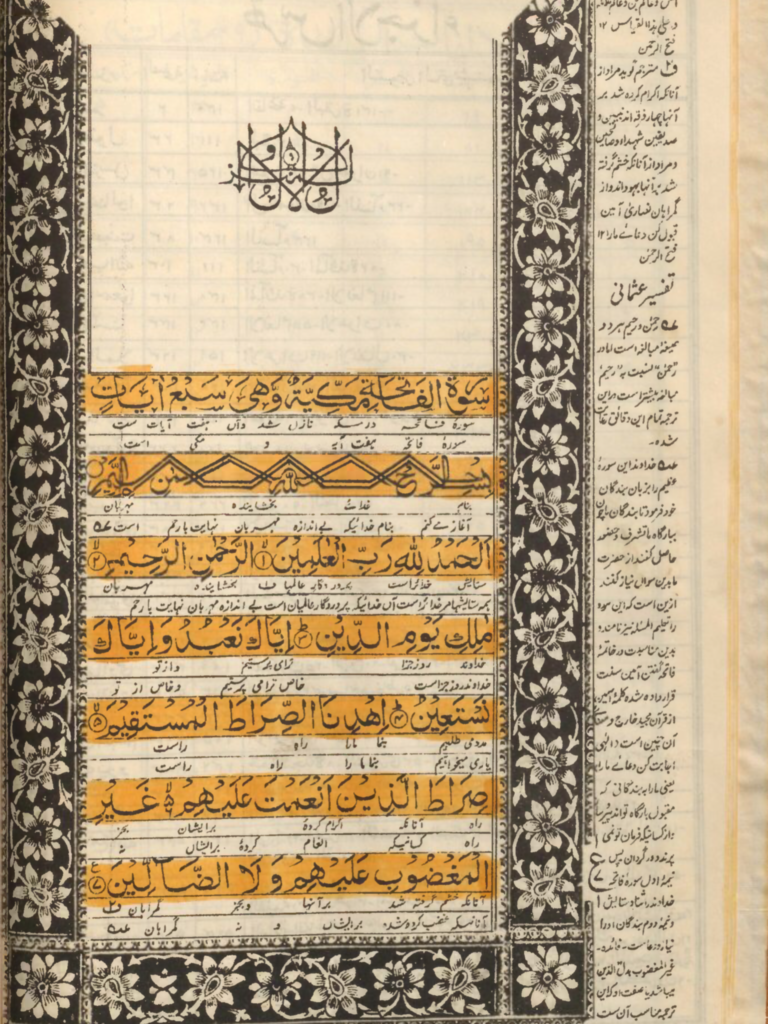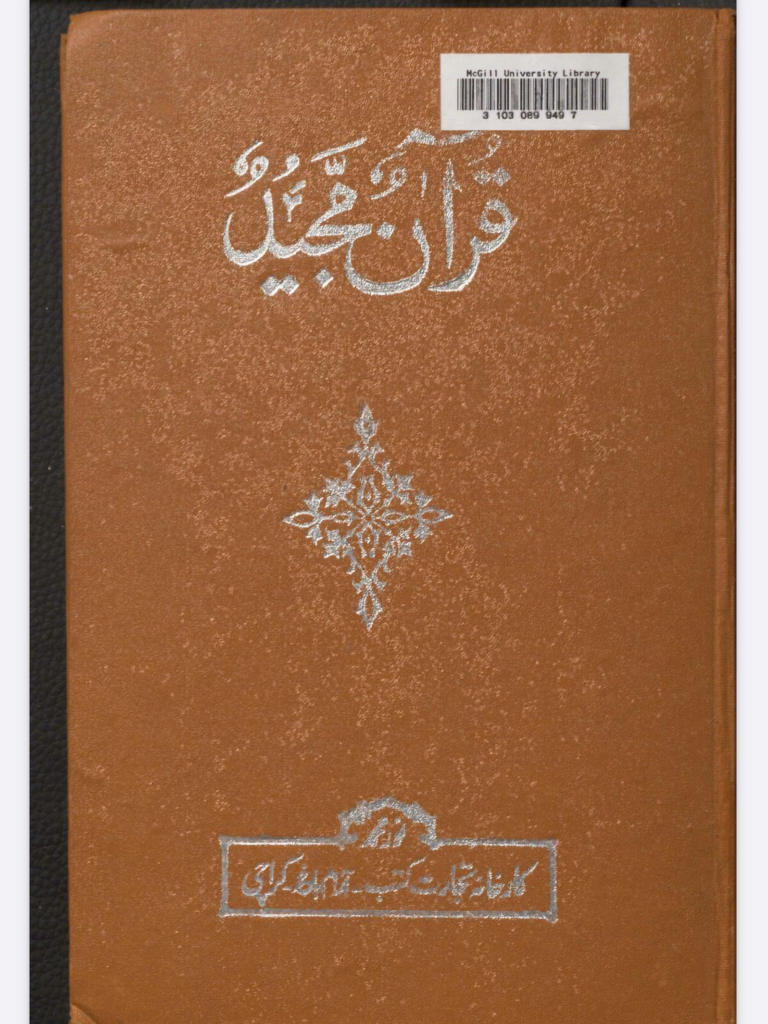‘Fatḥ al-Raḥmān bi-tarjamat al-Qurʾan’, the Persian Qur’an translation authored by the famous Indian scholar Shāh Walī Allāh Dihlawī (1703–1762), was the first translation to have a substantial influence on the genre of Qurʾan translation in the Indian subcontinent.
Shāh Walī Allāh was born into a religous family who lived near Delhi. He began learning the Qurʾan at an early age, and by the time he was ten he was already studying works written in Arabic and Persian. When he was 17, he assumed the responsibility of running the Madrasa-yi Raḥīmiyya, an Islamic seminary founded by his father in Delhi, where he worked as a teacher for the next twelve years.
During this period, Shāh Walī Allāh also worked on the first two chapters of ‘Fatḥ al-Raḥmān bi-tarjamat al-Qurʾan’. After examining the available translations with a view to using them as teaching materials, he had concluded that none were satisfactory: some were too extensive, while others were shorter but more difficult to understand. Finding no translation suitable for his lectures, he decided to produce a new translation himself.
However, around 1730 Shāh Walī Allāh decided to undertake the Pilgrimage to Mecca and Medina, which brought his activities at the Madrasah to a temporary halt. It was not until some years after his return that he began working again on this unfinished translation. According to Shāh Walī Allāh, a friend studied the Qurʾan and Qurʾan translation under him, and this induced him to write down his Persian translation as the lessons progressed. His primary aim was to produce a translation with minimal discrepancy between the source text and target text which would, at the same time, be intelligible to all readers. Shāh Walī Allāh envisaged his translation as a pedagogical tool through which the children of soldiers and craftsmen could be educated. Furthermore, by giving the reader direct access to the fundamental religious knowledge contained in the Qurʾan, Shāh Walī Allāh hoped to stop the uneducated masses from adopting and perpetuating non- Qurʾanic religious customs. He especially aimed to undermine the influence of the Sufis and Hindus who, according to Shāh Walī Allāh, were responsible for Indian Muslims deviating from the true path of Islam. Shāh Walī Allāh completed his work in 1738, and it was published with paralled Arabic text five years later. It has since been republished several times, often together with other translations. For instance, in 1980 it was published in an edition together with the very popular Tafsīr-i Uthmanī (see picture).

In his preface to ‘Fatḥ al-Raḥmān’, Shāh Walī Allāh prescribes how it should be read and taught. He instructs that his work should be studied in small circles, in the same way that the Companions of the Prophet used to study the Qurʾan. The most educated person joining a circle, who is either familiar with tafsīr works or has previously studied the underlying translation with a learned person, should read one or two chapters aloud. Thus, by listening to the Qurʾan in their own language, all members of the circle, even those who are unable to read, can understand the meaning of the holy scripture. The only difference between them and the Prophet’s Companions, he says, is that the early Muslims studied the Qurʾan in Arabic, whereas Shāh Walī Allāh’s contemporaries will learn the meaning of the holy book through his Persian translation.
Shāh Walī Allāh revolutionized the genre of Qurʾan translation on the Indian subcontinent in another way. In the preface to his translation, he instructs other translators that it should be apparent to the reader which words and phrases the translator adds to the target text. If the target text contains additional words to explain the context, these should be distinguished by using words such as yaʿnī. Likewise, if a translator intends to add explanatory notes, he should highlight them by adding the phrase mutarjim gūyad (‘the translator says’) at the beginning of the explanation. In this way, he promoted the practice of making explicit occasions where the translator has inserted their own opinion or reading into the target text; in other words, the practice of making the translator visible in the translation process.
Shāh Walī Allāh implemented this method in his own translation. For instance, in the first chapter, he adds a comment to his translation of the phrase ṣirāṭ alladhīna anʿamta ʿalayhim, saying that this verse refers to four groups (çahār firqa), namely the nabiyyīn, the ṣīddiqīn, the shuhadā and the ṣālihīn. He begins his interpolation into the text with the phrase mutarjim gūyad, thereby indicating that this explanatory note does not belong to the source text.
It is evident from this that Shāh Walī Allāh did not regard his translation as merely an interpretation or commentary designed to explain the meanings of the Qurʾan. His translation was composed in such a way as to enable readers to interact directly with the text of the Qurʾan. While reading ‘Fatḥ al-Raḥmān’ the reader had the opportunity to distinguish between the translator’s point of view and the Qurʾanic text itself, which means that the reader could also question, or at least reflect on, the translator’s notes and additions.
Kamran Khan
